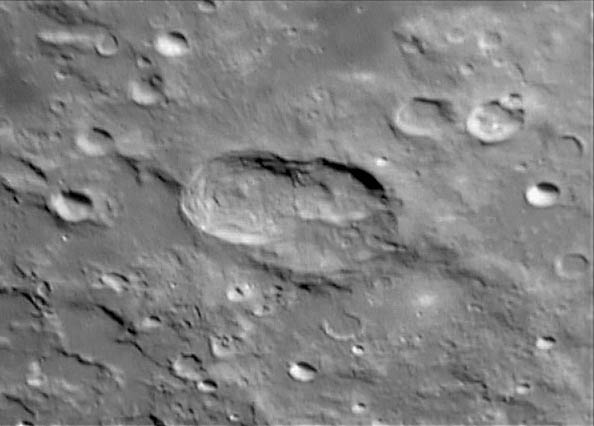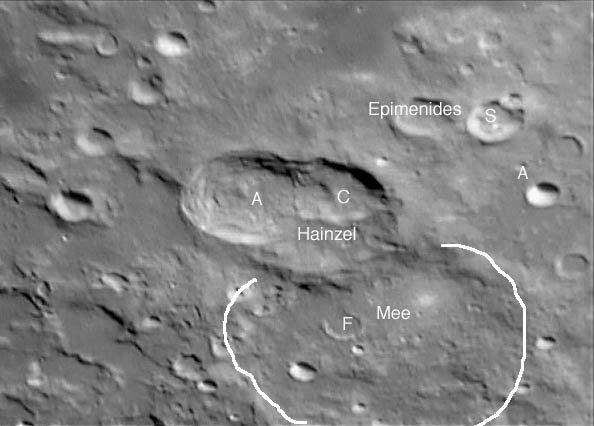March 29, 2005
Mee Too!!
Image Credit: Carmelo Zannelli |
|
Mee Too!! The Moon is a messy target. An incoming projectile has only about a 17% chance of striking a relatively flat area; most impacts occurred on top of existing craters. This causes uneven ejecta distribution and even low spots in the new craters rim where it cuts into the older crater. The Hainzel-Mee crater cluster is an even more complex crater group with impacts on top of impacts on top of impacts. The oldest feature in this sequence is the very poorly defined 132 km wide ruined crater Mee. The small crater Mee F was later formed as a normal crater but its rim was destroyed when smooth plains were formed on part of Mees floor. The 70 km wide crater Hainzel cut into Mees floor sometime before the smooth plains were emplaced (because the plains embay Hainzels rim). Hainzel A and C are an odd pair. Both overlap Hainzel but it is difficult to see which is younger. Hainzel A looks younger because of its central peak and superb rim terraces and its radial lineations to the north. However, instead of a clear crater rim overlapping C, there is simply a partial ridge between the two craters. Did Hainzel A and C form simultaneously? Even the Lunar Orbiter IV image does not answer that question! This image raises again questions of the naming of craters. Why is an old and obscured crater given the name Hainzel, while the remarkable and fresher crater A merely has a letter designation? This is not an isolated blunder, check out boring Epimenides and its brighter subsidiary S. And why does the odd ruin Mee warrant a name at all? Sometimes I think that a fresh look at lunar nomenclature, unencumbered by national pride, could yield a more consistent and useful nomenclature. But 300 years of mistakes, oops, I mean tradition, cant be set aside so cavalierly! Technical Details: Related Links: Yesterday's LPOD: Hungarian Moon Tomorrow's LPOD: A Looong Lunar Exposure |
|
Author & Editor: |
COMMENTS?
Register, Log in, and join in the comments.





